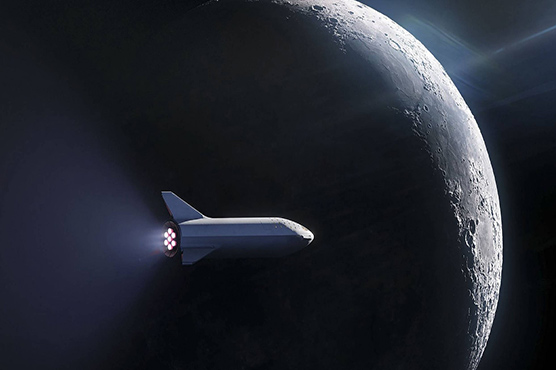To get to Moon in 2024, rocket is just NASA�s first headache

Europeans are also in large numbers and ready to pitch in with a communications module.
COLORADO SPRINGS (AFP) - In the shadow of the Rocky Mountains, Alan Campbell, a project manager for space systems at the famed Draper Laboratory that built the computer which took astronauts to the Moon 50 years ago, is waiting for news from NASA.
His firm has continued to specialize in the advanced technology required for space travel and is a natural candidate to help the US space agency in its quest to return to the Moon by 2024 -- once final requests for proposals go out.
"We don’t know when those are going to be because NASA is all thrown into a loop right now," Campbell told AFP from Draper’s booth at the 35th Space Symposium, which is being held in Colorado Springs.
"They’re still trying to figure it out," he said. "We can’t really work on their problems until they tell us, ‘These are the problems we want people to work on.’"
It’s a similar wait for hundreds of other companies, ranging from aerospace giants to the most specialized of sub-contractors, many of whom are at the annual space industry event.
Until March 26 of last year, American boots were set to return to the Moon in 2028 following the last such mission by Apollo 17 in 1972.
Last month though, the administration of President Donald Trump said it was speeding up that timetable by a full four years, throwing NASA into overdrive.
The first problem is linked to the super heavy rocket required for the lunar mission, the skyscraper-sized Space Launch System (SLS).
Boeing, the prime contractor, is years behind and isn’t certain it will be ready for its first test flight, without humans, in 2020.
At its booth, the US aerospace giant had relegated a model of the SLS to a corner.
- Europeans await anxiously -
The Orion capsule that will transport the astronauts, built by competitor Lockheed Martin, should be ready, program manager Michael Hawes assures AFP, and it will be delivered in January to the Kennedy Space Center.
Lockheed Martin has proudly displayed a life-size model of the Orion outside the conference hall.
But walking on the Moon will require more than a rocket and a capsule: NASA wants to assemble a mini-station in lunar orbit, called the Gateway, where the astronauts will make a stop-over before their descent to the lunar surface.
Sierra Nevada Corporation envisions an inflatable space habitat to house the astronauts while in moon-orbit.
At this stage, the company does not know when NASA wants it delivered.
Kimberly Schwandt, a spokeswoman for the company, is unperturbed. "Whatever NASA decides for the timetable, we are ready and willing," she said at the company’s booth.
Europeans are also here in large numbers and ready to pitch in with a communications module.
"Technically, we know that we can do it," said Johann-Dietrich Worner, director general of the European Space Agency (ESA). "And we hope that we can do it in time.
"It depends a little bit also on the calendar of the Americans," Worner said.
The heads of European space agencies attending the symposium told NASA chief Jim Bridenstine they need a plan to be finalized before the fall because the ESA budget will be approved in November.
"I’d be happy to make a trip out to Europe in order to give their political leadership the assurances necessary," said Bridenstine, aware that Trump’s abrupt shift in the Moon timetable was done without consultation with international partners.
- Loosen NASA bureaucracy -
The most urgent priority, according to industry executives, is for NASA to come up with the full requirements for the lander that would take the astronauts from the Gateway to the Moon.
Some of the more experienced firms caution that it may already be too late to build one in keeping with the accelerated timetable.
"We need to be bending metal next year, which means tooling already has to be in house," said Rob Chambers, director of Human Space Exploration Strategy at Lockheed Martin Space. "And I hope somebody ordered a bunch of aluminum."
Others warned that NASA will need to loosen its legendary bureaucracy to move things ahead.
Lookheed Martin’s Hawes, the Orion program manager, pointed to development of the capsule to illustrate the point.
"Just to give you an example, on the Orion program we have 400 regularly scheduled meetings a week between the NASA team and the Lockheed Martin team," Hawes said. "Does that speak urgency to you?"
Another issue is spacesuits.
"If you’re going to do something on the Moon, you need spacesuits," said The Aerospace Corporation’s Dean Eppler, who has spent 20 years testing prototypes.
The current calendar calls for delivery of a new spacesuit prototype to NASA in 2023 -- for testing.

